Art thrives on ambiguity. When a piece of work meets its witness halfway, filled with haze and absent of straightforward answers, people can be transformed. They can have charged experiences, moments that linger for the rest of their lives. But without a solid foundation or an emotional center, ambiguous art is just smoke: imperceptible and easily forgotten. Last weekend, I walked into the Memorial Chapel to see Director Sam Raby ’17’s take on John Patrick Shanley’s Pulitzer Prize-winning “Doubt: A Parable,” a story filled with intrigue, ambiguity, controversy, and power. What I saw was thoughtful and consistent, but it did not harbor the lingering intensity that I was hoping for.
This isn’t to say that Raby’s production is bad. Far from it. Its performers (Sarah Woolf ’15, Olivia Weinshank ’18, Alex Minton ’17, and Kimberly Berry ’15) play their characters with poise and skill, and there’s a thoughtfulness to each motion and inflection. Each scene was directed with purpose, and the lighting and sound design worked flawlessly. But there was something that was lacking from the proceedings of “Doubt.”
In “Doubt,” Sister Aloysius (Woolf) is a world-weary nun and Catholic principal who, in the wake of the arrival of Donald Muller, the school’s first African-American student, recruits the innocent and kind Sister James (Weinshank) to become cold and vigilant for his protection. The Sister discovers vague evidence that the school’s charismatic new priest, Father Flynn (Minton), might be taking advantage of the child in horrible, criminal ways. The play then becomes the story of Aloysius’ determination to uncover Flynn’s perceived crimes. As these are priests and nuns, people whose identity and profession are irrevocably tied, the struggle between the two can only end in the destruction of their own identities in the eyes of their own faith.
It’s a script filled with searing passion, anxiety, and very clearly defined characters. A late scene involving Muller’s mother (Berry) is written bursting with desperation, fear, and strength. This production approached these sentiments with a muted, measured caution. The performers’ motions were slow and calculated; scenes were staged to accentuate the distance between characters. It matched the confusion, the “doubt” that guides the force of the script, but made it difficult to feel the stakes of an issue so rooted in corruption and discomfort. The muted nature of the show’s emotion certainly made it a less unpleasant and challenging affair, but that dimmed the spark as much as it reduced the pain. There were moments that begged for confident outbursts, moments of anger and fear that needed to be as emotionally charged on the surface as they were underneath. These characters onstage fight for their very identities, but the actors fight to control the tar and corrosion of Shanley’s words, and the play suffers for it. This is discomfort that begs to be leaned into. As an alternative, the play glides over it. It’s graceful and painless, but it diminishes the text a little bit.
The Chapel, at first a nice, metaphorically rich place to put on such a play, ultimately harmed as much as it helped. It was difficult to see the faces of the performers, a crucial element in a play where so much is unsaid, and the set, which was sparse and simple, ended up restricting a lot of motion on the stage. Many scenes of this production involved two people sitting in chairs far away from each other, and though it led to some powerful moments, particularly with Woolf and Weinshank, it became less successful with every repetition.
Had the tensions and horrors of the script been amplified more, this could have been one of the best plays produced on campus. Instead, it is a well-made piece of theater, a production that deals with its forces of darkness quietly, masking it under measured, careful performance. That makes “Doubt” a good, thoughtful, well-composed production. From an execution standpoint, it just needed more certainty.
- Lex Spirtes, Photo Editor
- Lex Spirtes, Photo Editor
- Lex Spirtes, Photo Editor
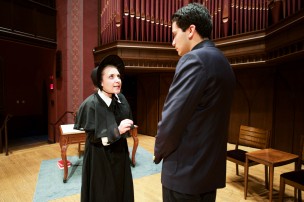
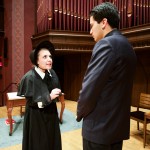
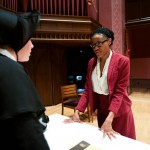
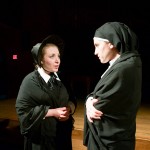
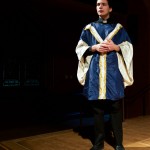
Comments are closed